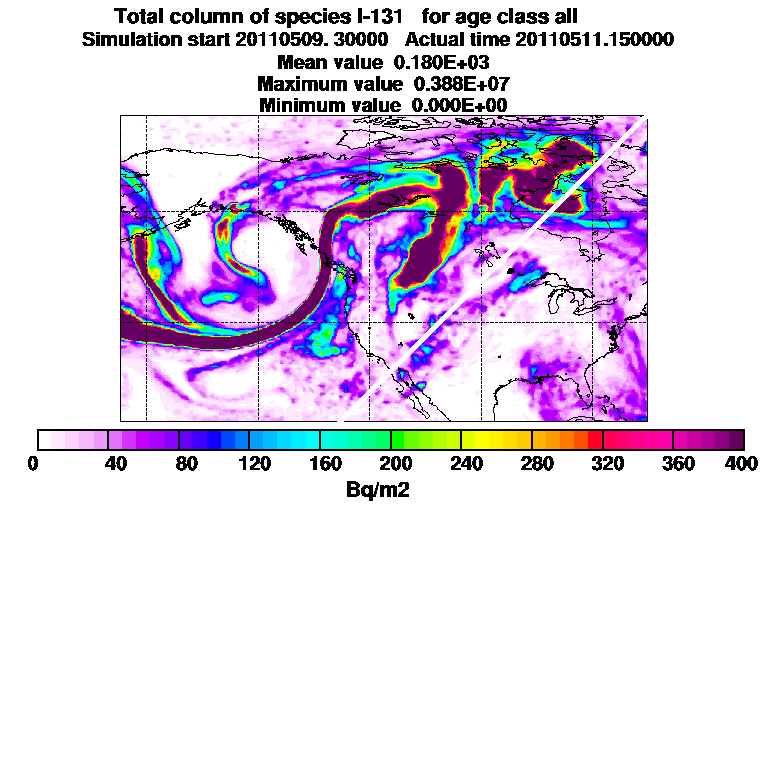The Norwegian Institute for Air Research (Nilo) ran models and forecasts
of the radioactive fallout from the Japanese nuclear accident for some
time. Nilo has stopped providing such forecasts to the public.
However, Alexander Higgins discovered an internal page of Nilo’s website showing high levels of radioactive iodine 131:

(Click for larger image).
Because this comes from an internal – rather than publicly-released – portion
of Nilo’s website, it cannot be confirmed that these are real readings,
as opposed to some sort of fictitious simulation. However, the webpage containing the simulation contains “flexpart”, which is the name of Nilo’s official,formerly-public simulations.
Despite the lack of official confirmation, given that the readings show high levels of radiation hitting much of the West this month, that the EPA has suspended all but routine radiation monitoring, that American states aren’t really monitoring, that Canada has drastically slashed the amount of monitoring it is doing, and that the situation in Japan is worse than the Japanese have previously admitted, I had to post this information … with appropriate caveats.
Update: Someone associated with University of California Berkeley’s radiation testing program wrote last month:
The tools they are using appear to be very sophisticated and realistic
codes for air transport modeling. This is not my area of expertise, but
I am getting this from reading the technical parts of their website.***
[But] I found the following disclaimer on the page you linked. I have put some parts in bold:
“These products are highly uncertain based on limited
information for the source terms. Please use with caution and understand
that the values are likely to change once we obtain more information on
the overall nature of the accident. The products should be
considered informational and only indicate ‘worst case scenario’
releases. From what we’ve learned recently, it seems releases of this
magnitude have not yet occurred. Furthermore, these modeling
products are based on global meteorological data, which are too coarse to provide reliable details of the transport of the plume across Japan.“Currently we are using a daily releases distributed evenly of 0.1E18 Bq I-131, 0.1 E17 Cs-137, and 0.1 E19 Xe-133 per day.“
Here in Oregon, the state is at least doing some monitoring. At the present time levels don't seem to be a cause for concern:
ReplyDeletehttp://public.health.oregon.gov/Preparedness/CurrentHazards/Pages/DailyAirMonitoring.aspx